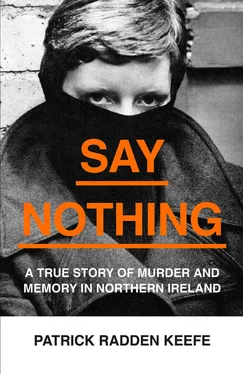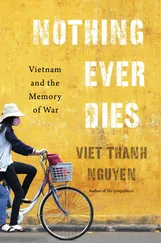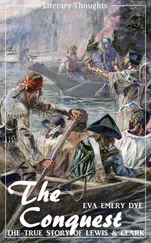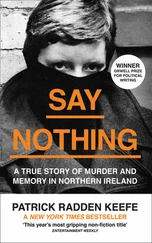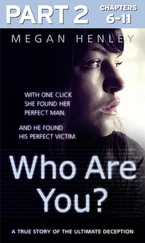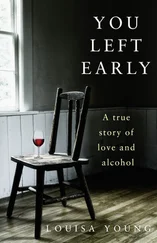
Gerry Adams (Kelvin Boyes/Camera Press/Redux)
Price had been loosely acquainted with Adams since childhood. When they were both kids, she used to see him riding with his family on the same buses she did, to republican commemorations at Edentubber or Bodenstown. But now he had reappeared as a firebrand. The first time she recognised him on the back of a lorry, addressing a crowd, she exclaimed, ‘Who does Gerry think he is, standing up there?’ Price found Adams intriguing, and faintly ridiculous. He was a ‘gawky fella with big black-rimmed glasses’, she would recall, and he had a quiet, watchful charisma. Price was irrepressibly outgoing, but she found it difficult to get a conversation started with Adams. He carried himself with an aloof air of authority and referred to her, affectionately, as ‘child’, though he was only a couple of years older than she was. The day after Price sprang James Brown from the hospital, Adams expressed concern about her operational security. ‘It said in the paper that the women were not wearing disguises,’ he murmured, adding reproachfully, ‘I hope that isn’t true.’
Price assured him that the press account was inaccurate, because the sisters had been decked out in blonde wigs, bright lipstick and garish head scarves, ‘like two whores at a hockey match’. Adams took himself pretty seriously, Price thought. But she could laugh at anyone. For security, Adams did not sleep in his own home, and would bed down instead in various billets, some of which were not homes at all, but local businesses. He had taken to sleeping, lately, at a West Belfast undertaker’s. Price found that hilarious. She joked that he slept in a coffin.
‘It was an exciting time,’ she said later. ‘I should be ashamed to admit there was fun in it.’ But there was. She had only just turned twenty-one. Another family might disapprove of what Dolours and Marian were doing, but to Albert and Chrissie Price, there was a sense in which the girls were simply taking up a household tradition, and while you could blame a man for hitting someone, you could not blame him for hitting back. ‘The Provo army was started by the people to set up barricades against the loyalist hordes,’ Albert explained at the time. ‘We beat them with stones at first, and they had guns. Our people had to go and get guns. Wouldn’t they have been right stupid people to stand there? Our people got shotguns at first and then got better weapons. And then the British, who were supposed to protect us, came in and raided our homes. What way could you fight? So you went down and you blew them up. That was the only thing left. If they hadn’t interfered with us, there probably would be no Provo army today.’
When British troops were killed, Albert would freely acknowledge the humanity of each individual soldier. ‘But he is in uniform,’ he would point out. ‘He is the enemy. And the Irish people believe that this is war.’ He was against death, he insisted, but ultimately this was a question of means and ends. ‘If we get a united socialist Ireland,’ Albert Price concluded, ‘then maybe it will all have been worth it.’
As if to underline the futility of nonviolent resistance, when Eamonn McCann and a huge mass of peaceful protesters assembled in Derry one chilly Sunday afternoon in January 1972, British paratroopers opened fire on the crowd, killing thirteen men and wounding fifteen others. The soldiers subsequently claimed that they had come under fire and that they only shot protesters who were carrying weapons. Neither of these assertions turned out to be true. Bloody Sunday, as it would forever be known, was a galvanising event for Irish republicanism. Dolours and Marian were in Dundalk when they heard reports of the massacre. The news filled them with an overpowering anger. In February, protesters set fire to the British embassy in Dublin. In March, London suspended the hated Unionist parliament in Northern Ireland and imposed direct rule from Westminster.
That same month, Dolours Price travelled to Italy to speak in Milan and help to spread the word about oppression of Catholics in Northern Ireland. She lectured about ‘the ghetto system’ and the lack of civil rights. ‘If my political convictions had led me to take part in murder, I would confess without hesitation,’ she told an interviewer, employing the sort of deliberately evasive syntactical construction that would become typical when people described their actions in the Troubles. ‘If I had been commanded to go to kill an enemy of my people I would have obeyed without the slightest fear.’ In a photograph from her appearance there, Price posed like an outlaw, with a scarf pulled across her face.
Конец ознакомительного фрагмента.
Текст предоставлен ООО «ЛитРес».
Прочитайте эту книгу целиком, купив полную легальную версию на ЛитРес.
Безопасно оплатить книгу можно банковской картой Visa, MasterCard, Maestro, со счета мобильного телефона, с платежного терминала, в салоне МТС или Связной, через PayPal, WebMoney, Яндекс.Деньги, QIWI Кошелек, бонусными картами или другим удобным Вам способом.
